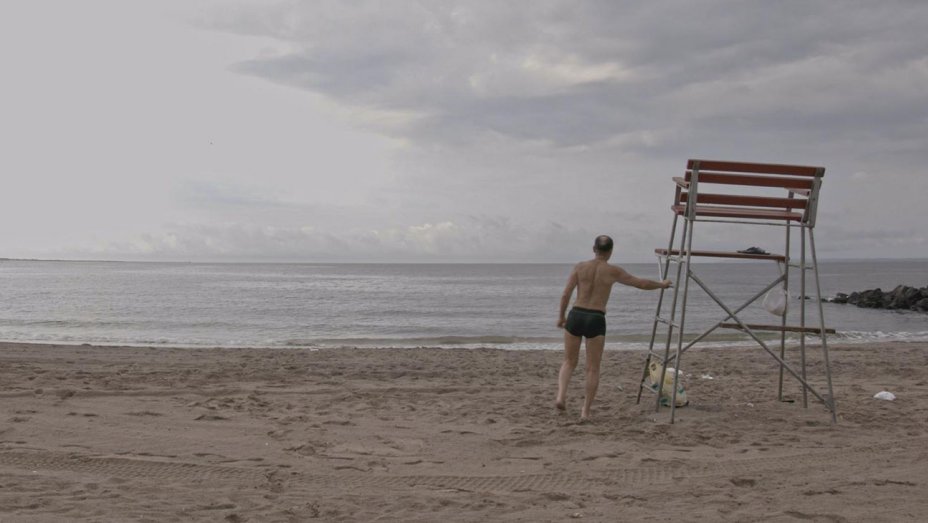The Hottest August
Director/ Brett Story
Watched at Tacoma Film Festival
Rating 2.5/5
Canadian director Brett Story’s approach to documentary is refreshingly offbeat. Formally challenging but not impenetrable, socially relevant in spite of her disinterest in the usual ticked-box approach to agenda filmmaking, and not beholden to the imperatives of strong central characters or third act resolutions. In her 2016 film The Prison in Twelve Landscapes and in her latest, The Hottest August, she takes a becalmed survey approach to her subject matter: the stranglehold of the prison-industrial complex on the lives of current and former prisoners in the earlier film, and the subtle politics of climate change in her latest.
She moves from place to place without a map–a factory, a park, a sidewalk, a town–and interviews a few people on site, maybe just observes the action for a few minutes, and usually lets the ambient sound and natural light and weather fill in the atmosphere. What you take away from her films depends on your degree of attentiveness to the quiet cues she embeds in the scenes. As I wrote in an earlier review of Prison, “the succession of these scenes, sparse in abject information but saturated with a pall of unease, builds to an overpowering sense of futility.”
But the elements in that film that worked in its favor–a firm grip on the thematic through-line, a steady pace that kept one’s outrage on a slow boil, and its several scenes of both beauty and appalling injustice–are almost entirely missing from The Hottest August.
Shot during August of 2017 in and around New York City, and meant to capture or somehow communicate the unease of Trump’s presidency during a collective awakening to the coming chaos of climate change and inequality, the movie is unconvincing and desultory, jumping around the five boroughs with the barest connection between scenes, tethered by a thesis that seems to disappear due to inattention. The film is also not helped by the grim cinematography, which casts everything in a flat, bloodless hue, as if New York was coated in an off-white apocalyptic dust. While I can recall several shots, moments, sequences and settings from Prison, I’d have a hard time calling up a single memorable image, face, or idea from this film.
Story doesn’t add anything to the mix by asking halting, Journalism 101 questions from behind the camera. This appears to be a gesture to Chris Marker and Pierre Lhomme’s Le Joli Mai, but Story utterly fails to convey the spirit of that film’s generous embrace of its interviewees or the filmmakers’ own bonhomie. I’m sure the people here have more to say than she allows, but I couldn’t be sure that Story knew how to draw those answers out of them.
The Hottest August falls into the regrettable niche of hands-off, theoretical filmmaking that is these days consuming a bit too much of the attention of graduate school professors with access to funding and a cameraperson. I saw Story’s film the day after I sat through Sarah Christman’s similarly smug and similarly colorless Swarm Season, which is far more insufferably opaque than The Hottest August, and I wondered what is going on. Is there some new trend in academia to make films as ugly and conceptually gnomic as possible, as if letting the audience slip into your film through a welcome doorway is somehow a violation of your intellectual bona fides?
The theatrical trailer for The Hottest August suggests a powerful invocation of approaching doom, or at least a promise of sweeping revelations. But viewers may be sorely disappointed to discover the film to be random, unfocused, and ultimately unfulfilling. It doesn’t even work as experimental cinema.

